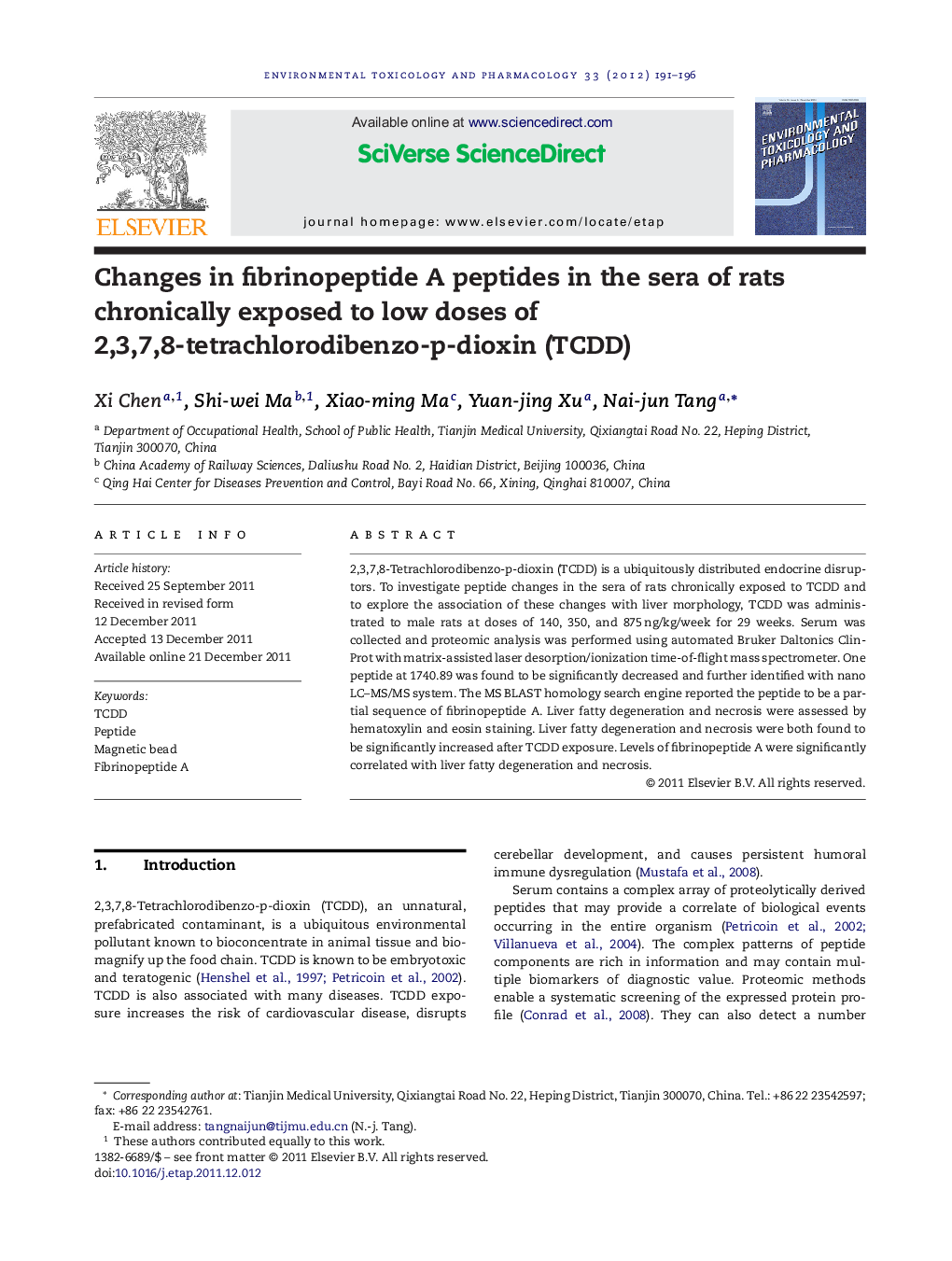| Article ID | Journal | Published Year | Pages | File Type |
|---|---|---|---|---|
| 2583506 | Environmental Toxicology and Pharmacology | 2012 | 6 Pages |
2,3,7,8-Tetrachlorodibenzo-p-dioxin (TCDD) is a ubiquitously distributed endocrine disruptors. To investigate peptide changes in the sera of rats chronically exposed to TCDD and to explore the association of these changes with liver morphology, TCDD was administrated to male rats at doses of 140, 350, and 875 ng/kg/week for 29 weeks. Serum was collected and proteomic analysis was performed using automated Bruker Daltonics ClinProt with matrix-assisted laser desorption/ionization time-of-flight mass spectrometer. One peptide at 1740.89 was found to be significantly decreased and further identified with nano LC–MS/MS system. The MS BLAST homology search engine reported the peptide to be a partial sequence of fibrinopeptide A. Liver fatty degeneration and necrosis were assessed by hematoxylin and eosin staining. Liver fatty degeneration and necrosis were both found to be significantly increased after TCDD exposure. Levels of fibrinopeptide A were significantly correlated with liver fatty degeneration and necrosis.
► In this study we investigate protein and peptide changes in the serum of rats chronically exposed to TCDD and liver fatty degeneration and necrosis caused by TCDD. ► We find that the peptide at 1740.89 was significantly decreased, which was chosen to identify by Nano LC–MS/MS system. The MS BLAST homology search engine reported the peptide to be a partial sequence of fibrinopeptide A. ► The fibrinopeptide A was significantly correlated with liver fatty degeneration and necrosis. ► Fibrinopeptide A in the serum might be decreased after TCDD exposure and be one potential mechanism underlying the liver fatty degeneration and necrosis.
